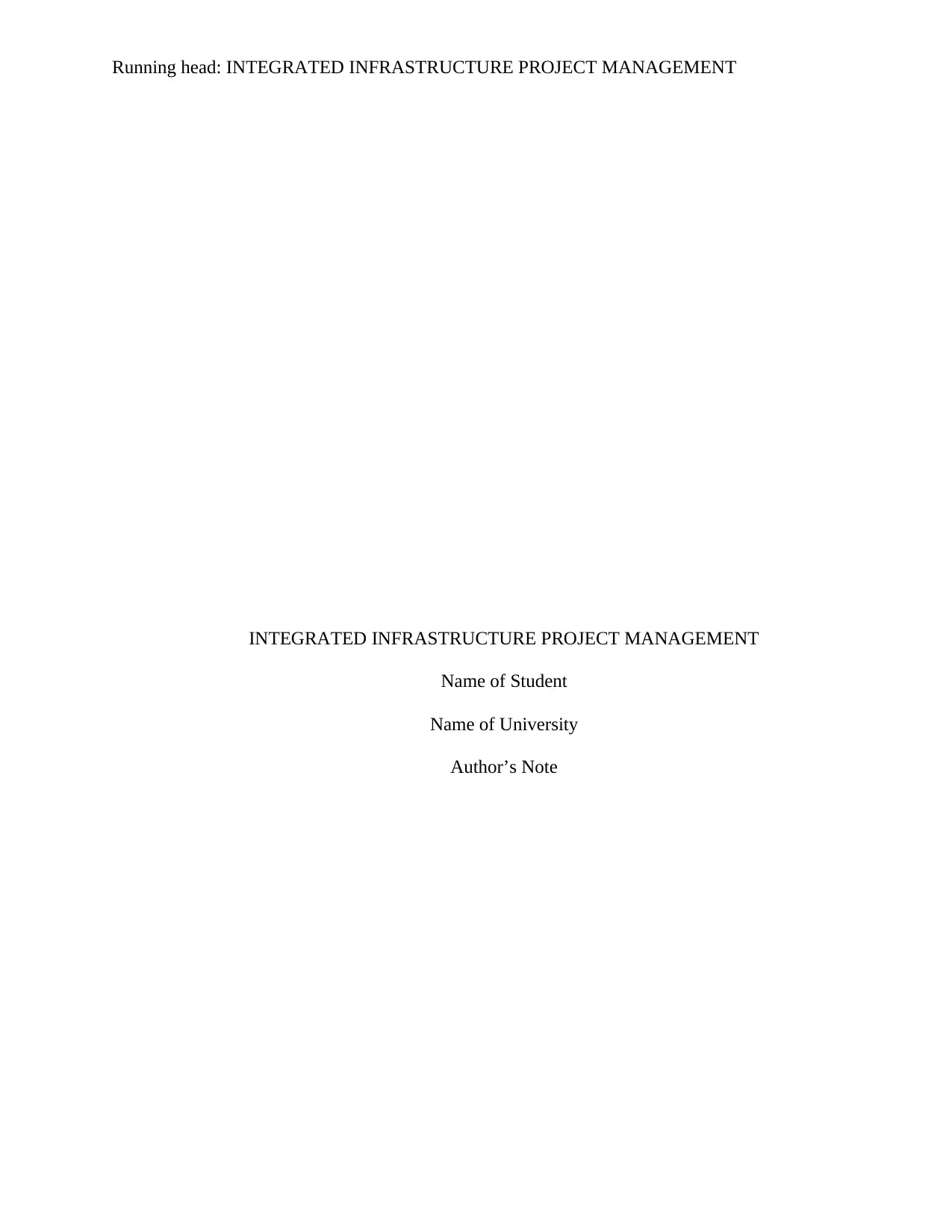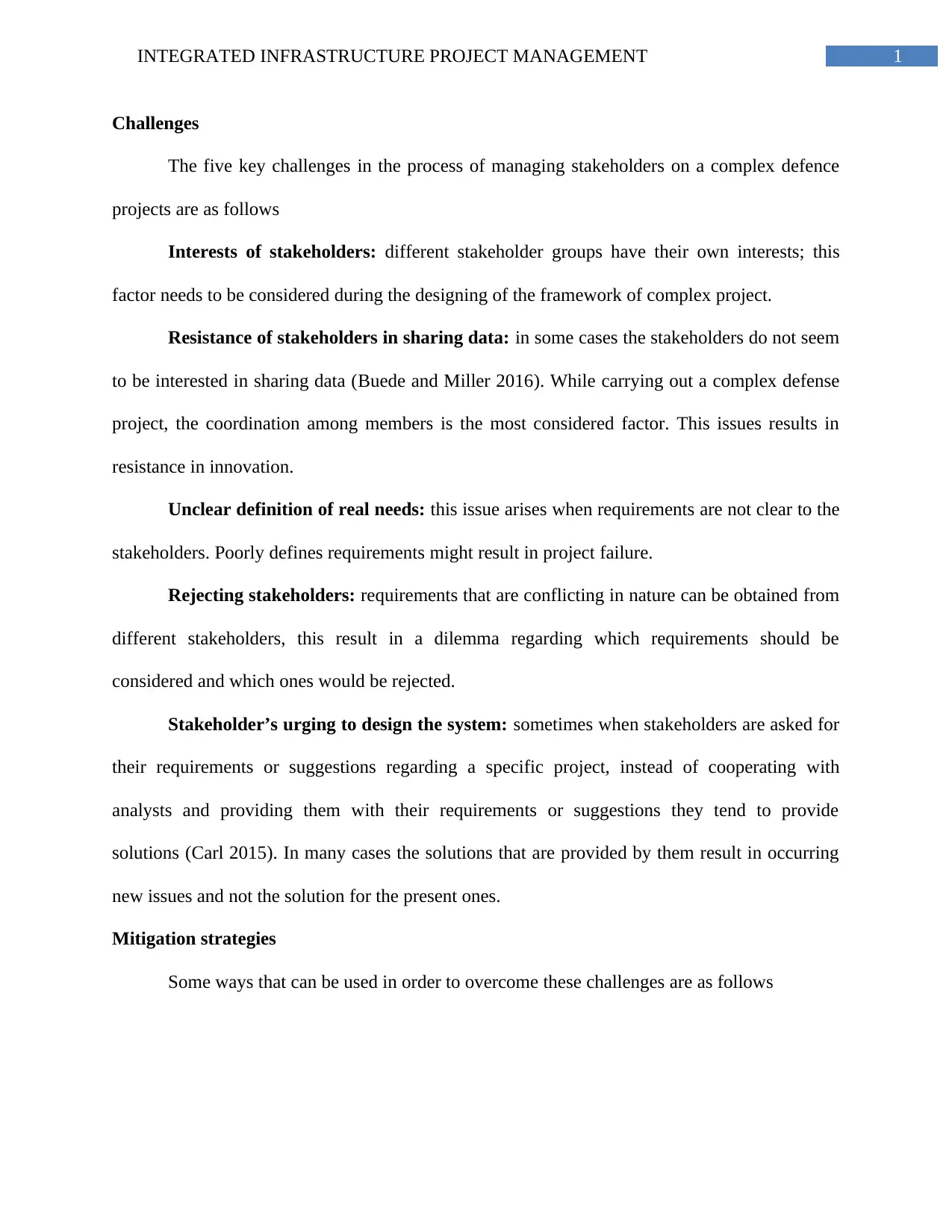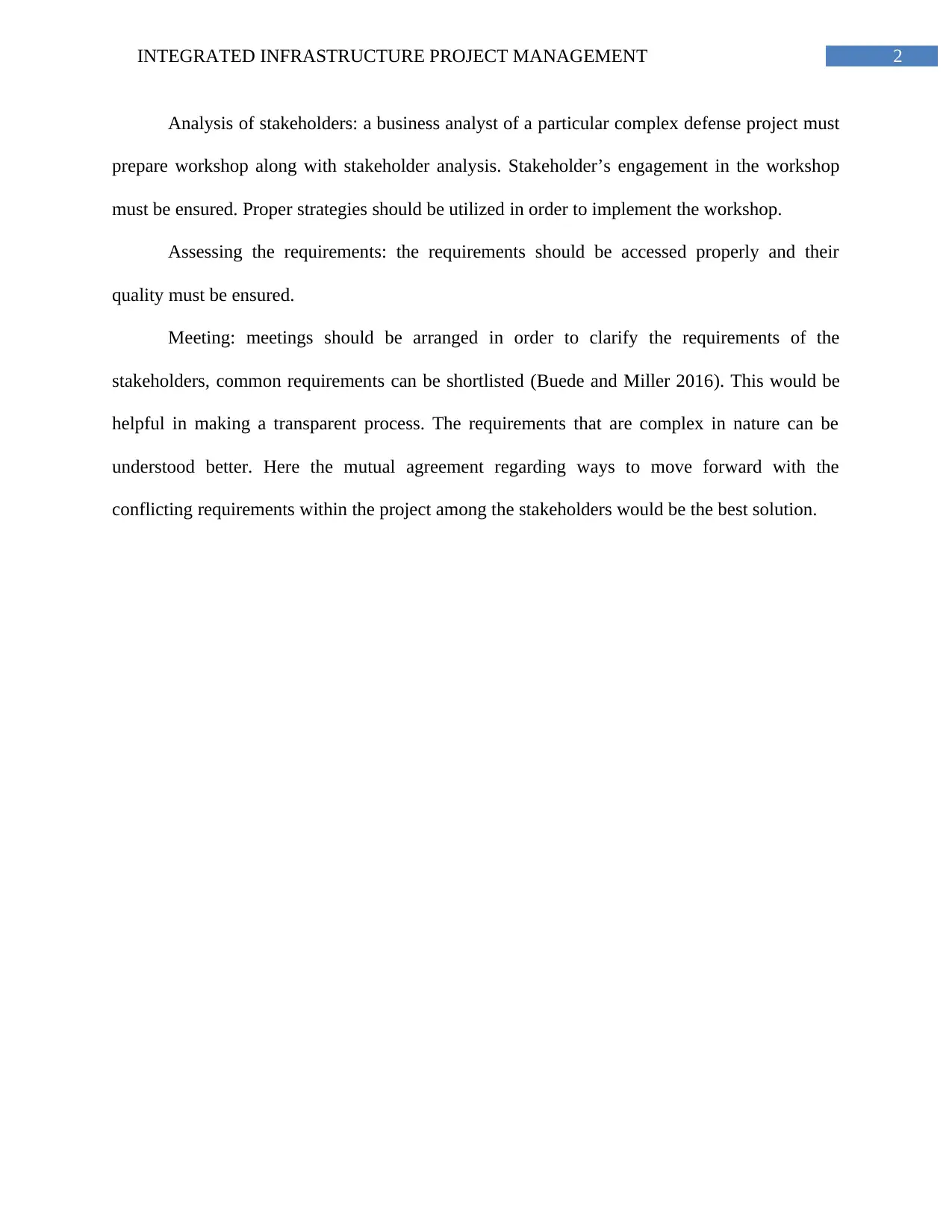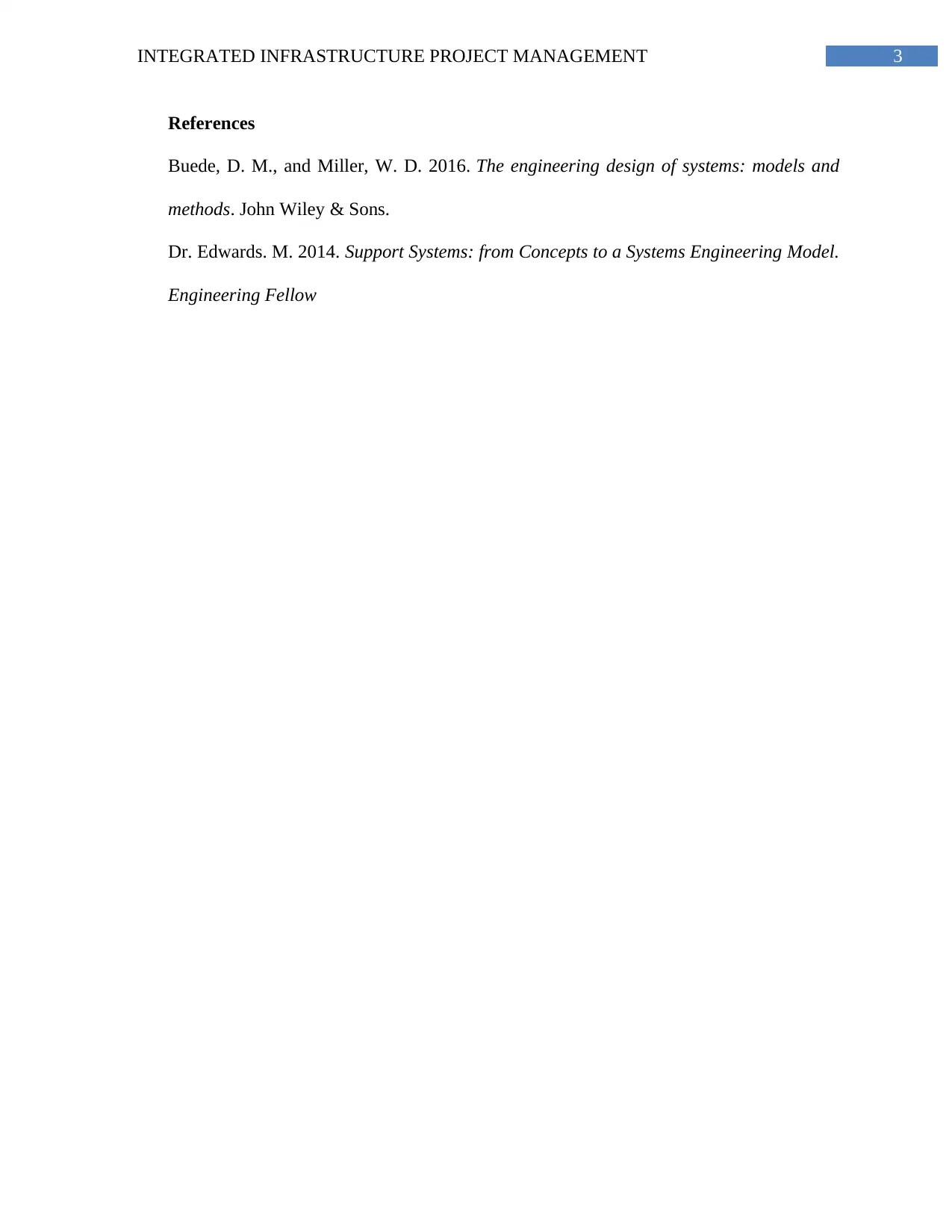Challenges in Stakeholder Engagement in Defence Infrastructure
VerifiedAdded on 2023/04/17
|4
|415
|206
Report
AI Summary
This report identifies five key challenges in managing stakeholders within complex defense projects: differing stakeholder interests, resistance to data sharing, unclear needs, conflicting requirements, and stakeholders urging specific system designs. It proposes mitigation strategies such as stakeholder analysis workshops, thorough requirement assessments, and clarification meetings to foster transparency and address conflicting needs. By implementing these strategies, project managers can improve stakeholder engagement, reduce project risks, and enhance the likelihood of successful project outcomes. Desklib provides access to similar documents and study tools.
1 out of 4











![[object Object]](/_next/static/media/star-bottom.7253800d.svg)